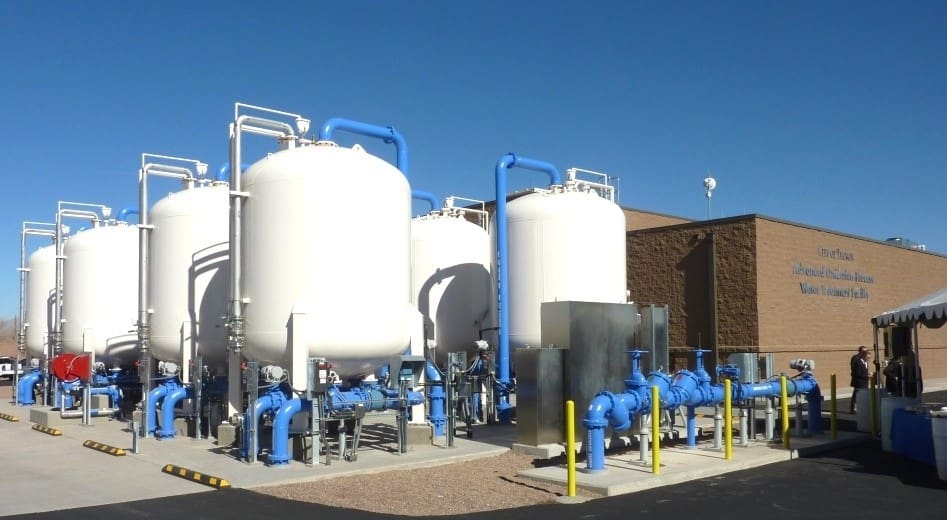How M270 Waste Management Help in the Safe Disposal of Toxic Materials
How M270 Waste Management Help in the Safe Disposal of Toxic Materials
Blog Article
Ingenious PFAS Treatment Solutions for Safer Water
The raising occurrence of PFAS contamination in water products demands a crucial assessment of ingenious therapy services. In addition, arising bioremediation techniques supply a more lasting strategy to dealing with PFAS difficulties. pfas management.
Overview of PFAS Contamination
PFAS contamination has actually arised as a significant environmental and public health worry. Per- and polyfluoroalkyl materials (PFAS) are a group of artificial chemicals recognized for their persistence in the atmosphere and human body, leading them to be commonly referred to as "forever chemicals." These substances have been extensively utilized in various sectors, including firefighting foams, water-repellent materials, and food product packaging, largely as a result of their water- and grease-resistant residential or commercial properties.
The widespread usage of PFAS has actually caused their discovery in soil, water products, and also in the blood of human beings and pets. Studies have actually linked PFAS direct exposure to various health and wellness issues, consisting of developmental effects in infants, immune system dysfunction, and numerous forms of cancer cells. Additionally, the ecological perseverance of these substances complicates their degradation and removal, raising concerns concerning long-term eco-friendly influences.
Regulatory bodies are progressively carrying out rigorous guidelines to keep an eye on and decrease PFAS levels in alcohol consumption water and other ecological mediums. As awareness of PFAS contamination grows, it has ended up being vital for areas and sectors to seek effective therapy solutions to reduce exposure and secure public wellness.
Advanced Filtration Technologies
As the necessity to address PFAS contamination escalates, advanced purification innovations have emerged as a critical component in the remediation initiatives aimed at removing these persistent chemicals from water resources. These technologies leverage advanced mechanisms to successfully target and record PFAS substances, which are notoriously resistant to standard therapy approaches.
One of the most promising methods is using granular activated carbon (GAC), which adsorbs PFAS molecules due to its high area and permeable framework. This technique has actually been extensively carried out in both metropolitan and commercial setups, demonstrating considerable reductions in PFAS concentrations. Furthermore, ion exchange materials have actually gained grip, especially designed to selectively bind PFAS ions from water, hence promoting their elimination.
Membrane filtration modern technologies, such as reverse osmosis and nanofiltration, likewise show effectiveness in PFAS removal by physically dividing pollutants from water - pfas management. These systems can achieve high degrees of purity, making them ideal for alcohol consumption water applications
Chemical Therapy Innovations
Countless chemical therapy developments are being checked out to successfully attend to PFAS contamination in water materials. One appealing method involves the usage of innovative oxidation procedures (AOPs), which utilize effective oxidants such as ozone, hydrogen peroxide, or chlorine dioxide integrated with UV light to damage down PFAS compounds into much less hazardous materials. This technique has shown efficacy in research laboratory setups, revealing prospective for scalability in real-world applications.
An additional ingenious method is the advancement of ion-exchange materials specifically made to target PFAS. These resins can selectively adsorb PFAS substances from water, enabling their elimination throughout therapy procedures. Current developments have actually improved the efficiency and ability of these materials, making them a positive alternative for water treatment facilities.
In addition, researchers are checking out using chemical agents like persulfate and ferrous ions to enhance the destruction of PFAS in contaminated water. These agents can cause chain reaction that promote the breakdown of consistent PFAS compounds.
Emerging Bioremediation Techniques
Recent developments in chemical therapy innovations pfas treatment have led the method for checking out bioremediation methods as a sensible option for attending to PFAS contamination. Bioremediation harnesses the natural metabolic processes of microbes to degrade or transform contaminants, making it an attractive method for tackling relentless contaminants like PFAS.
Emerging techniques in bioremediation include using genetically engineered bacteria that can particularly target and break down PFAS substances. These microbial pressures are being established for their improved deterioration capabilities, raising the performance of the removal procedure. Additionally, researchers are investigating the possibility of plant-assisted bioremediation, where particular plant types may uptake and withdraw PFAS from contaminated soil and water.
One more appealing technique is the application of bioaugmentation, which includes introducing valuable bacteria right into polluted environments to increase the degradation of PFAS. This technique go can help with faster removal timelines and enhance total efficiency.

Regulatory Frameworks and Standards
A thorough governing framework is vital for efficiently handling PFAS contamination and ensuring public health and wellness defense. The boosting recognition of per- and polyfluoroalkyl substances (PFAS) as environmental toxins has actually triggered different government and state agencies to establish requirements that control their existence in water materials. The United State Environmental Defense Company (EPA) has actually developed health and wellness advisories and is functioning towards establishing enforceable restrictions for PFAS in alcohol consumption water.
State-level laws vary substantially, with some states taking on stricter standards than those proposed by the EPA. These guidelines often include maximum impurity levels (MCLs) for certain PFAS compounds, tracking requirements, and reporting commitments for water utilities. Additionally, arising structures focus on the remediation of contaminated websites, highlighting the demand for efficient treatment modern technologies.

Final Thought
In final thought, the development and application of innovative PFAS therapy remedies are crucial for attending to the pervasive issue of water contamination. Advanced filtration modern technologies, chemical treatments, and arising bioremediation methods collectively provide a diverse strategy to properly minimize and deteriorate PFAS levels. As governing frameworks remain to advance, incorporating these innovations will certainly be vital to safeguard public wellness and recover the stability of contaminated water sources, eventually adding to a cleaner and more secure environment.
Report this page